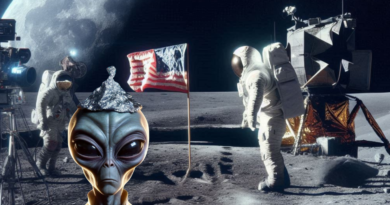Hidden Costs of Mainstream Music – Lexi
The Hidden Costs of Mainstream Music: An Indie Musician’s Perspective – Article written by Lexi
Spotify’s Royalty Distribution Issues
As an indie musician navigating the labyrinth of the modern music industry, I’ve often found myself questioning the fairness and ethics of the platforms we rely on. Recently, Spotify has been under scrutiny for its royalty distribution practices, and a significant court case has brought to light some troubling realities. Despite generating massive revenue from its vast user base, Spotify’s pay-out to artists averages just $0.0038 per stream.
For context, a million streams would earn an artist only about $3,800—a sum that hardly covers the costs of producing and promoting music. The lion’s share of Spotify’s revenue goes to major record labels and publishers, leaving independent artists like myself with mere crumbs.

Spotify’s dominance allows it to set terms that are often unfavourable to artists. This imbalance highlights the urgent need for more equitable and transparent royalty structures. Legislative efforts like the Music Modernization Act are steps in the right direction, but much more needs to be done to ensure fair compensation for all artists.

The Hidden Costs of Mainstream Music
Attending high-profile concerts has become more than just a way to enjoy live music—it’s a status symbol. The allure of saying, “I saw this artist at that famous venue,” often overshadows the genuine enjoyment of music. As the cost of attending these events continues to rise, it’s worth questioning the true value of this experience and considering alternative ways to support and enjoy music.

Status Symbol and Social Pressures
For many, attending a big-name concert is about more than the music; it’s about the social cachet that comes with it. High ticket prices and the associated travel costs create an exclusive environment where being able to afford and attend these events becomes a marker of social status. According to a report by Statista, the average ticket price for a major concert in North America was $96.17 in 2019, with some high-profile acts charging upwards of $500 per ticket. This dynamic pressures fans into spending exorbitant amounts of money just to be part of the “in” crowd, often at the expense of experiencing the genuine joy and connection that music can bring.

Commercial Manipulation in the Music Industry
The modern music industry is adept at manipulating public perception to create artificial demand for certain artists and events. Through relentless marketing, TV appearances, and brand endorsements, the industry pushes specific artists to the forefront, often overshadowing more talented but less commercially viable musicians. This manipulation can make it difficult for fans to access a diverse range of music, instead funnelling them towards a homogenized selection of mainstream hits.
Formulaic Nature of Modern Pop Music
Much of today’s mainstream music follows a predictable, formulaic structure designed to maximize commercial success. A study by the journal Scientific Reports found that pop music has become increasingly homogenized over the past few decades, with a noticeable decrease in the variety of timbres and pitches used in songs. This approach often involves recycling familiar melodies, lyrics, and themes, leading to a sense of sameness across many pop songs. The reliance on remixes and derivative content further dilutes originality, making it challenging for truly innovative music to break through.

Generational Disconnect
This commercial-driven approach has also created a generational disconnect, where younger audiences are less familiar with classic and ground breaking music from the past. A survey by Music Watch found that only 34% of Gen Z respondents could identify songs by iconic bands such as The Beatles or Led Zeppelin. Overexposure to commercially-driven music can desensitize listeners to more subtle and genuine forms of artistic expression, limiting their musical palate and appreciation for diverse genres.
Lessons from “Dirty Pop”
The recent documentary “Dirty Pop” delves into the making of trending boy bands in the 90s and the unethical practices behind their creation. It reveals how these bands were manufactured for profit, with little regard for the well-being of the artists involved.
The maker of these bands, Lou Pearlman, ultimately died alone in jail, highlighting the long-term consequences of such exploitative practices. This historical example serves as a cautionary tale about the dangers of prioritizing commercial success over ethical treatment and artistic integrity.
The Value of Supporting Independent and Local Artists
One solution to these issues is to shift our focus towards supporting independent and local artists. These musicians often prioritize creativity and authenticity over commercial success, offering a refreshing alternative to the formulaic nature of mainstream music.

According to a report by the American Association of Independent Music, independent artists represent about 34.5% of the global music market and often see higher revenue shares per stream compared to those signed with major labels. By attending local shows, purchasing music directly from artists, and engaging with them on social media, fans can help foster a more diverse and vibrant music scene.
Strategies for Promoting Genuine Creativity
Educate and Expose: Encourage education about music history and exposure to a wide range of genres and artists.
Support Independent Artists: Actively seek out and support independent and local musicians through platforms like Bandcamp and SoundCloud.
Critical Listening: Foster a culture of critical listening, where audiences engage deeply with the music.
Challenge the Status Quo: Engage in conversations that challenge mainstream music industry practices.
Celebrate Originality: Highlight and promote artists who offer unique and innovative music.
Preserve Cultural Heritage: Make efforts to preserve and promote music with historical and cultural significance.

Conclusion
The high costs and environmental impacts of attending mainstream concerts, coupled with the formulaic nature of much of today’s pop music, call for a re-evaluation of how we experience and support music. By shifting our focus to independent and local artists and promoting genuine creativity, we can help create a more authentic and diverse musical landscape. It’s time to challenge the status quo and rediscover the true value of music as an art form.
– Lexi









